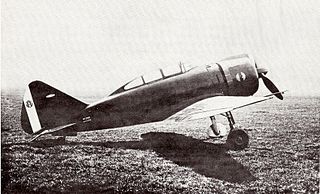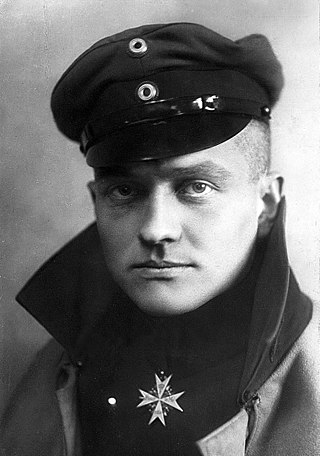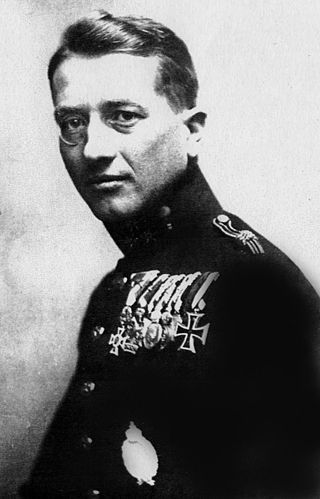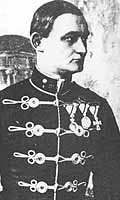Related Research Articles

A flying ace, fighter ace or air ace is a military aviator credited with shooting down five or more enemy aircraft during aerial combat. The exact number of aerial victories required to officially qualify as an ace is varied, but is usually considered to be five or more.

Vitéz István Horthy de Nagybánya was Hungarian regent Admiral Miklós Horthy's eldest son, a politician, and, during World War II, a fighter pilot.

The Austro-Hungarian Aviation Troops or Imperial and Royal Aviation Troops were the air force of the Austro-Hungarian Empire until the empire's demise in 1918; it saw combat on both the Eastern Front and Italian Front during World War I.
Warrant Officer Dezső Szentgyörgyi was the highest scoring Hungarian fighter ace of the Royal Hungarian Honvéd Air Force in World War II.

The Reggiane Re.2000 Falco I was an Italian all metal, low-wing monoplane developed and manufactured by aircraft company Reggiane. The type was used by the Regia Aeronautica and the Swedish Air Force during the first part of the Second World War.

The following are lists of World War I flying aces. Historically, a flying ace was defined as a military aviator credited with shooting down five or more enemy aircraft during aerial combat. The term was first used by French newspapers, describing Adolphe Pégoud as l'as, after he downed seven German aircraft.

The MÁVAG Héja ("Hawk") was a Hungarian fighter aircraft of World War II based on the Italian Reggiane Re.2000. The 70 Re.2000s delivered from Italy were converted into MÁVAG Héja Is by being fitted with Hungarian-built Weiss Manfréd WM K-14 engines, armor for the pilot, an additional fuel tank, and being modified in various other ways. The MÁVAG Héja II was an entirely Hungarian-made fighter developed from the Héja I, but with even more changes, including replacing the Italian machine guns with better Hungarian ones and installing a more powerful Hungarian engine.

Godwin Karol Marian von Brumowsky was the most successful fighter ace of the Austro-Hungarian Air Force during World War I. He was officially credited with 35 air victories, with 8 others unconfirmed because they fell behind Allied lines. Just before the war ended, von Brumowski rose to command of all his country's fighter aviation fighting Italy on the Isonzo front.

The 101st Home Air Defence Fighter Group later Wing was an elite fighter-group of the Royal Hungarian Air Force in World War II. Also known as the Puma after the unit's insignia, it was the most famous and well known of all Hungarian fighter units during the war. Created in the spring of 1944, under the Nazi German occupation of Hungary, it operated against US Fifteenth Air Force and the Soviet VVS during 1944–45 over Hungary and later, Austria. Analogue to Jagdverband 44, many of the highest scoring and most experienced Hungarian fighter pilots served in the unit, including the top scoring Hungarian ace of World War II, Szentgyörgyi Dezső.
The Messerschmitt Bf 109 was a German World War II fighter aircraft designed by Willy Messerschmitt and Robert Lusser during the early to mid-1930s. It was one of the first true modern fighters of the era, including such features as all-metal monocoque construction, a closed canopy, a retractable landing gear, and was powered by a liquid-cooled, inverted-V12 aero engine.

OberleutnantRudolf Szepessy-Sokoll Freiherr von Negyes et Reno was a Hungarian World War I flying ace credited with five aerial victories. He began his military career as a cavalryman as the war began in 1914. After winning the Silver Medal for Bravery and being promoted into the officers' ranks, he transferred to the Austro-Hungarian Aviation Troops in mid-1915 as an aerial observer. On 14 February 1916, while participating in a historic strategic bombing raid on Milan, he scored his first aerial victory. After shooting down another airplane and an observation balloon, Szepessy-Sokoll was transferred to a fighter unit after pilot training. After shooting down a pair of Macchi L.3s on 5 November 1917, he was killed in action the next day.
Lieutenant Lajos Tóth was one of the most successful fighter pilots of the Royal Hungarian Air Force in the Second World War. He scored 24 aerial victories against the Soviet Air Force and an additional four against the United States Air Force for a total of 28 confirmed kills. After the war he voluntarily repatriated from exile in the United States to serve in the aerial combat arm of the Hungarian People's Army but was ultimately arrested and executed in one of the "salami" show trials in 1951.

The Weiss Manfréd WM-23 Ezüst Nyíl was a Hungarian fighter aircraft of World War II developed by the Manfréd Weiss Steel and Metal Works. Designed by Samu Béla and his team, the WM-23 was an entirely Hungarian design with retractable landing gear, a three-bladed variable-pitch propeller, a closed canopy, inverted gull wings and an elliptical low-wing design. Development started in summer 1939 with one prototype produced and test flown. Demonstrating good flying characteristics and generally being considered an excellent design, the WM-23 was planned to enter mass production. However, the prototype was destroyed on 21 April 1942, and by this time the MÁVAG Héja fighter was being used which acceptably filled the intended role of the WM-23. Therefore, it was decided to not allocate further resources to completing the project, and to cancel it.
References
This article includes a list of references, related reading, or external links, but its sources remain unclear because it lacks inline citations .(November 2014) |
- Dénes Bernád, György Punka: Hungarian Fighter Colours, volume 2, MMP Books, Poland, 2014.
- György Punka: Hungarian Aces of World War II, Osprey Publishing, Oxford, England, 2002.
- Becze Csaba: Elfelejtett hősök a Magyar Királyi Honvéd Légierő ászai a II. világháborúban, Puedlo, Budapest, 2006.